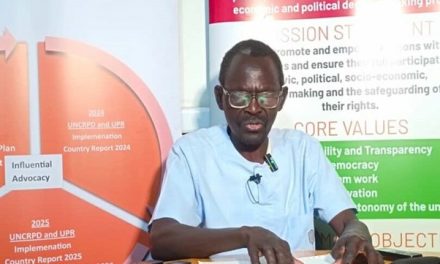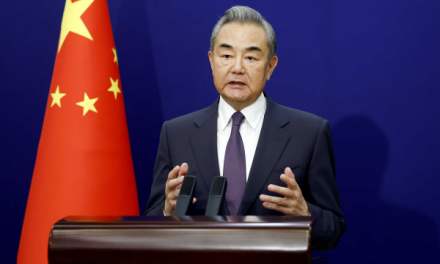
China ensures a smooth shift to a new phase in its COVID-19 response

By Lu Jiahai
Since COVID-19 struck, the Central Committee of Communist Party of China (CPC) with general secretary Xi Jinping at its core has put the people first, as well as life first all along and followed a science-based and targeted approach to adapt China’s COVID-19 response in light of the evolving situation.
China has withstood the five waves of the global pandemic, avoiding a mass spread of severe virus strains, such as the original and Delta variant in the country, greatly reducing severe cases and deaths, and bought valuable time for the development and application of vaccines and drugs, as well as the preparation of health care resources.
COVID-19 mortality rate in China have remained at the lowest level in the world, the health of the people has steadily improved, and the country has achieved the best results in balancing economic development and pandemic response in the world.
Taking into account the characteristics of the virus, the situation of the pandemic, immunization, medical resources preparedness and experience in pandemic response, China will downgrade its management of the infectious disease of COVID-19 from Class A to Class B, starting from January 8, 2023, which means its pandemic response will enter a new phase with new situations and tasks.
Priority has shifted from preventing infection to ensuring health and preventing severe cases, focusing on vaccination, personal protection and timely treatment in case of infection, for the elderly, people with underlying medical conditions, children, pregnant women and other people at high risks of severe illness, in order to meet people’s medical needs and reduce severe cases and deaths.
China is facing a surge of COVID-19 infections. In addition to differences in lifestyle, geography and climate in a vast country such as China, there are differences in prevention and control measures and in levels of compliance with the measures. The pandemic is at different stages of development in different places, which may lead to supply shortages of drugs and even public panic in some areas.
Accordingly, China has prepared for such risks to ensure a smooth transition to the new phase. Specifically, China has taken the following important measures.
First, take multiple steps to guide local authorities to expand medical resources and the supply of medical services to meet people’s medical needs. These include: expanding fever clinic resources by setting up more fever clinics or fever treatment rooms and streamlining the fever clinic consultation process; promoting triage to provide patients with tiered and graded medical treatment services; providing virtual consultation services and medication guidance for fever patients; and increasing the supply of drugs through multiple channels including retail pharmacies and online purchases.
Secondly, strengthen key medical supplies and increase the manufacturing capacity of crucial supplies. According to China’s Ministry of Industry and Information Technology, the country has produced 1.49 billion COVID-19 antigen test kits since December 1, 2022, supplying the market with 1.67 billion kits, sufficient to meet the people’s testing needs.
In terms of COVID-19 vaccines, China has an annual production capacity of more than 7 billion doses, and has produced over 5.5 billion doses per year, also sufficient to meet the people’s vaccination needs. For N95 masks, the number of manufacturers has increased from 50 at the beginning of December 2022 to more than 500 now, and their daily production capacity is 190 million plus, sufficient for steady supplies.
As to fingertip pulse oximeters, China can produce over 250,000 sets at present, compared with 115,000 in early November 2022. Regarding antipyretic drugs, the current production capacity for ibuprofen and acetaminophen has increased significantly, with a daily manufacturing capacity of 202 million tablets and actual production volume of 190 million tablets, which ensures steady supplies. The ministry will strengthen coordination, deployment and targeted supply to alleviate the current drug shortage in some regions.
Additionally, strengthen the treatment of severe cases. Data figures show that the overall hospital capacity, resources and equipment are sufficient to meet the demand for treatment of severe cases. China will expand its critical care resources and establish a support system among different regions of the country due to their different stages of the pandemic, nationwide critical care resources can be deployed for the timely treatment of critical patients.
In the meantime, tertiary hospitals (the most sophisticated) are required to play the lifeline role in providing critical care, while community health care institutions are mobilized to serve the elderly with underlying medical conditions, using a graded management approach according to their health risk level.
Meanwhile, strengthen response and medical capacities in rural areas, since the regions are less experienced in pandemic response and less equipped with medical resources. pandemic prevention and control in rural areas is also the focus of the new phase. The two major measures already taken involve the distribution of drugs and the timely referral of patients with severe cases.
It’s essential to accelerate the vaccination coverage for the elderly. Vaccination is an effective means to prevent severe cases and deaths. Strengthening vaccination for the elderly can reduce the strain on health care resources.
Furthermore, communicate more effectively with the public to prevent and control the pandemic. Public panic and lack of understanding can be prevented by a timely use of multiple digital platforms to give advice on health monitoring, personal protection, and rational use of medication at home. The public can know how to use medication properly, as well as when and where to seek medical treatment.
China will keep placing people’s health at the center, optimizing the allocation of medical resources, strengthening coordinated treatment of critically ill patients, increasing drugs’ supply to safeguard the health of the people to ensure an orderly transition to a new phase of its nationwide COVID-19 response.
The author is a professor in the Department of Epidemiology from School of Public Health at Sun Yat-Sen University and the Director of National Medical Products Administration (NMPA) Key Laboratory for Quality Monitoring and Evaluation of Vaccines and Biological Products.





































